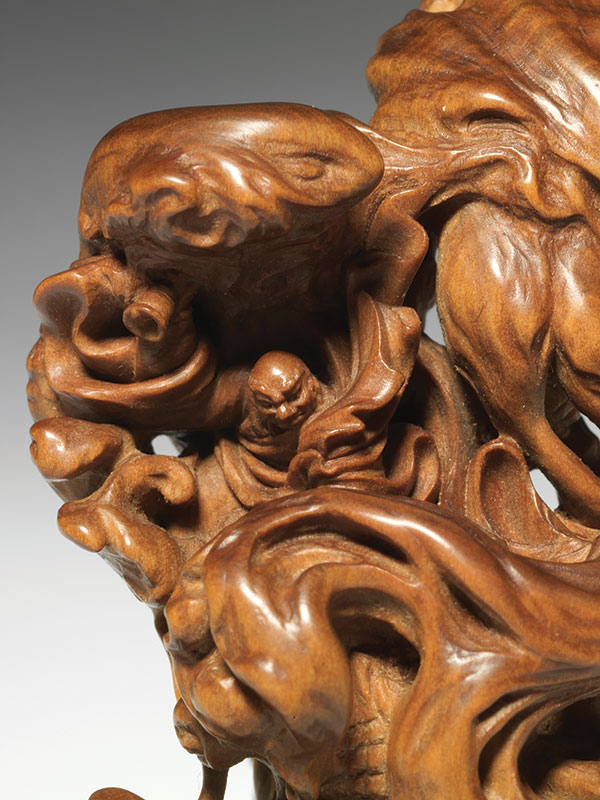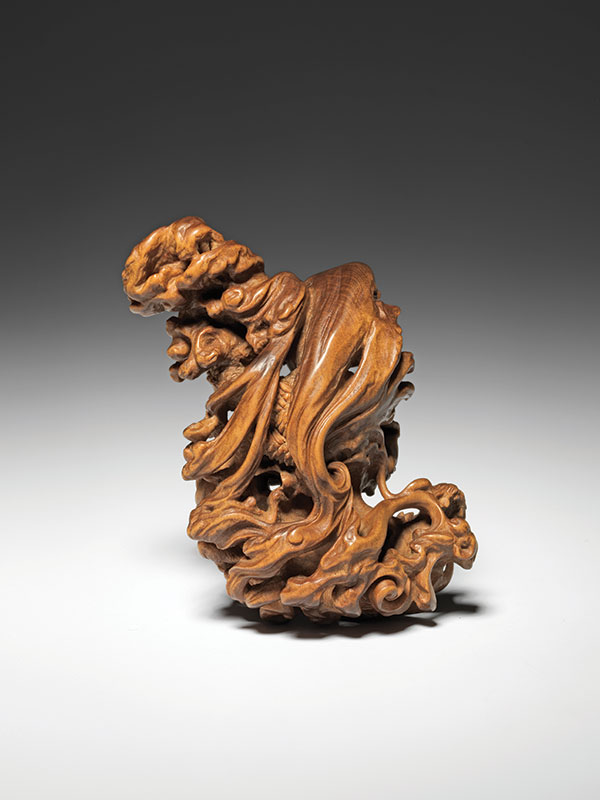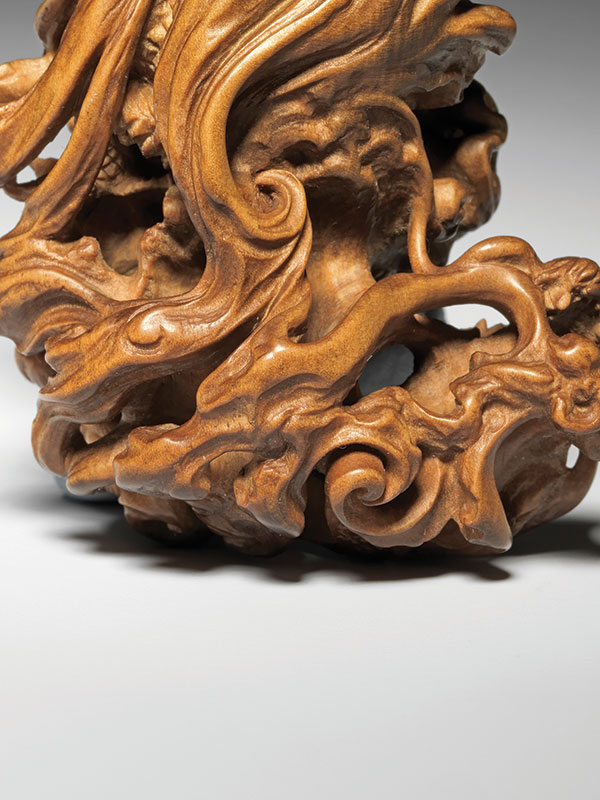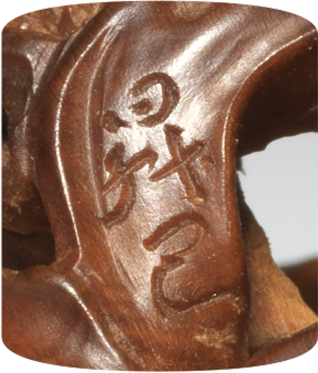Nishino Shoko (1915-1969)
Tokyo, 1943
Handaka Sonja, holding aloft a small bell and is encircled by a dense swirling clouds at Mount Sumeru (Jp. Sumisan). The twisting body of his familiar, a giant dragon, weaves in and out of the tumult. Close study of this dynamic carving rewards the viewer by revealing clouds that suggest the illusion of an Osanshouo (giant salamander or pepper fish), a tiger and a further dragon.
The subject matter is based on a well-known Japanese saying “Chochin ni tsurigane”. It is a metaphor for an ill-matched pair. It is notable Shoko carved this during a time of war.
The hakogaki inscribed on the lid: 提灯尓釣鐘、木彫根付 ”Chochin ni tsurigane, kibori netsuke” [Paper Lantern and Temple Bell, carved wood netsuke] and inside the lid: 昭和癸未孟冬、北草人、昇己作、with kao. “Showa mizunoto-hitsuji, moto, Hokusojin, Shoko saku, with kao” [Mid-winter of the mizunoto-hitsuji year of the Showa period (Showa 18, 1943), Hokusojin, made by Shoko]
Three seals on the hakogaki (inside): 西野 Nishino, 昇己 Shoko, and one more seal (an elaborate one stamped on the upper right).“Chochin ni tsurigana, kibori netsuke”
A pupil of Morita Soko, Shoko was a highly individual artist who, according to Bushell (Collectors’ Netsuke), would spend days making a preliminary studies and trying to get to the heart of his subject to understand its “philosophical and metaphysical meanings”. Before commencing his work, Shoko would need to feel he had reached a state of spiritual purity. He would then spend up to six months working on one piece. Bushell writes: “He holds that the artist puts his very spirit in his work by concentration and purity that is the spirit which transcends shape and substance to create art”. He abandoned netsuke carving in 1963 to concentrate on Buddhist sculpture, which he approached with the same ethos as his netsuke.









